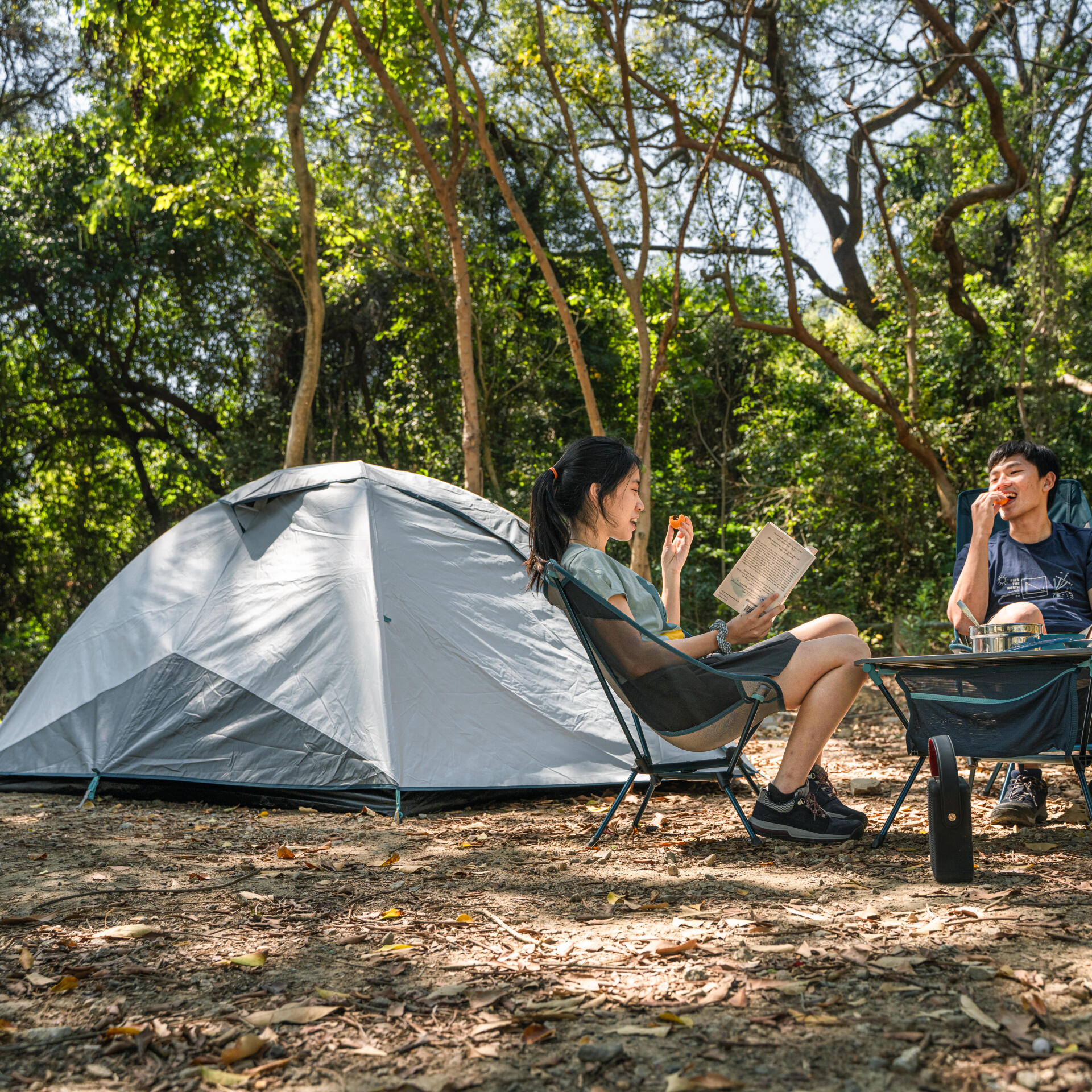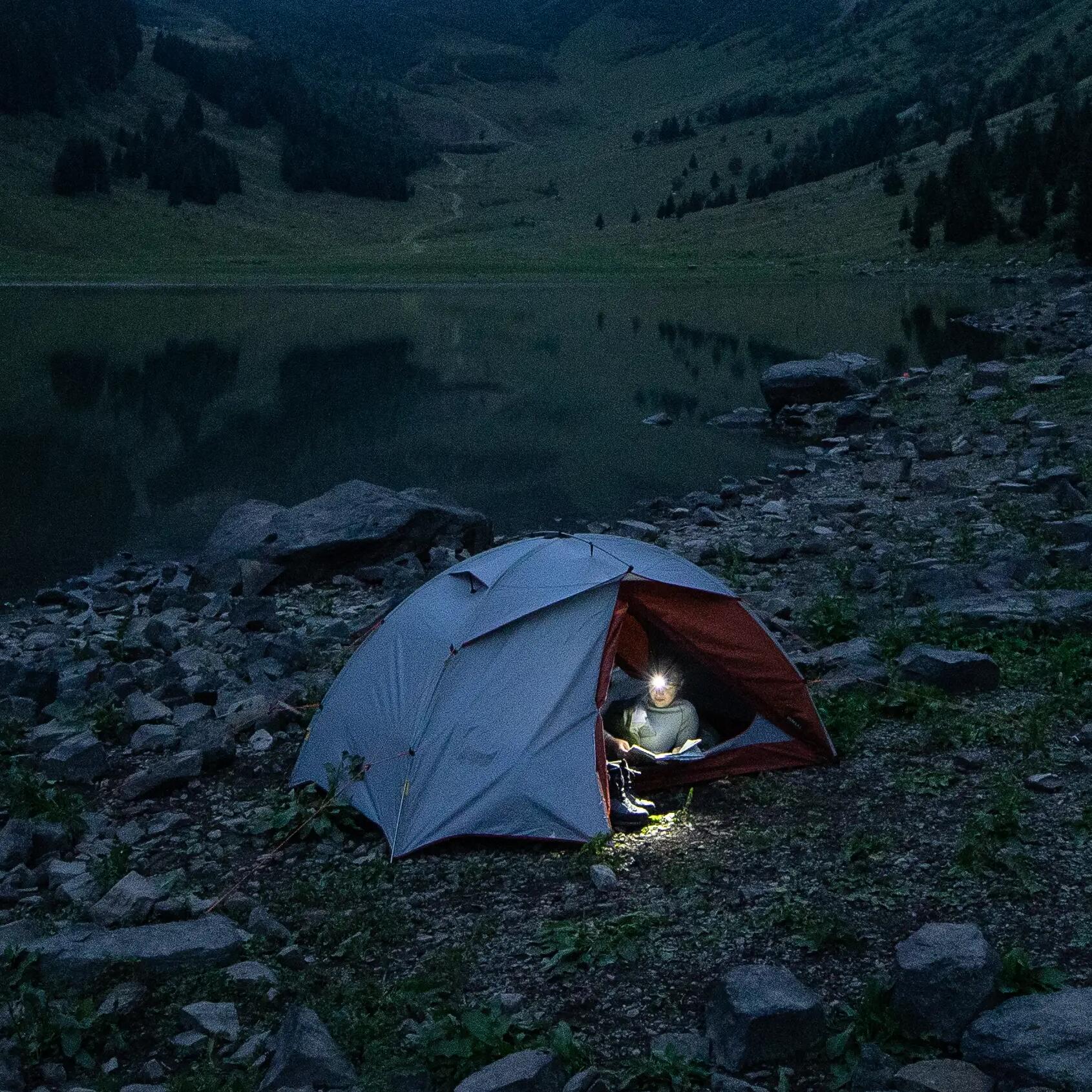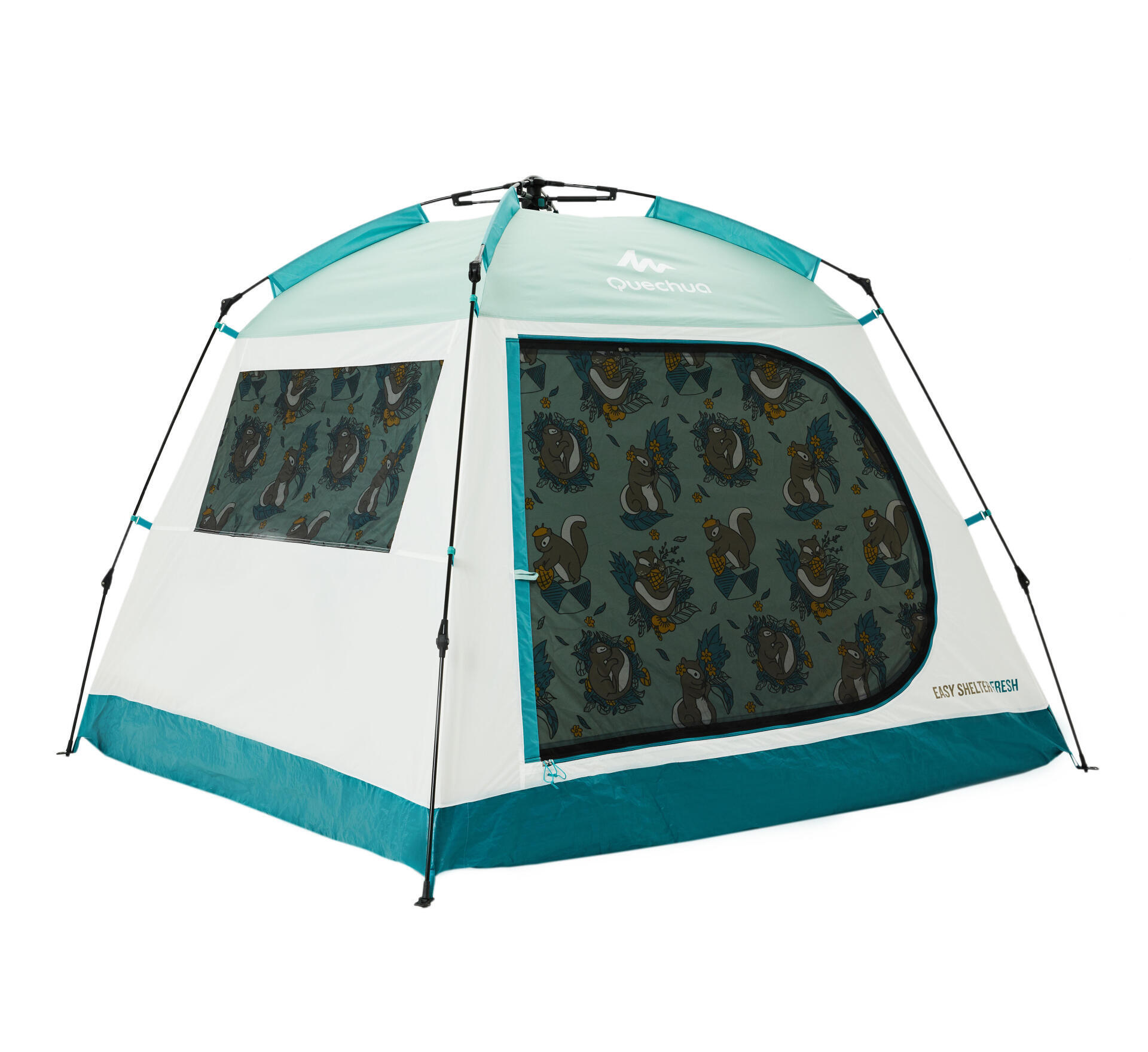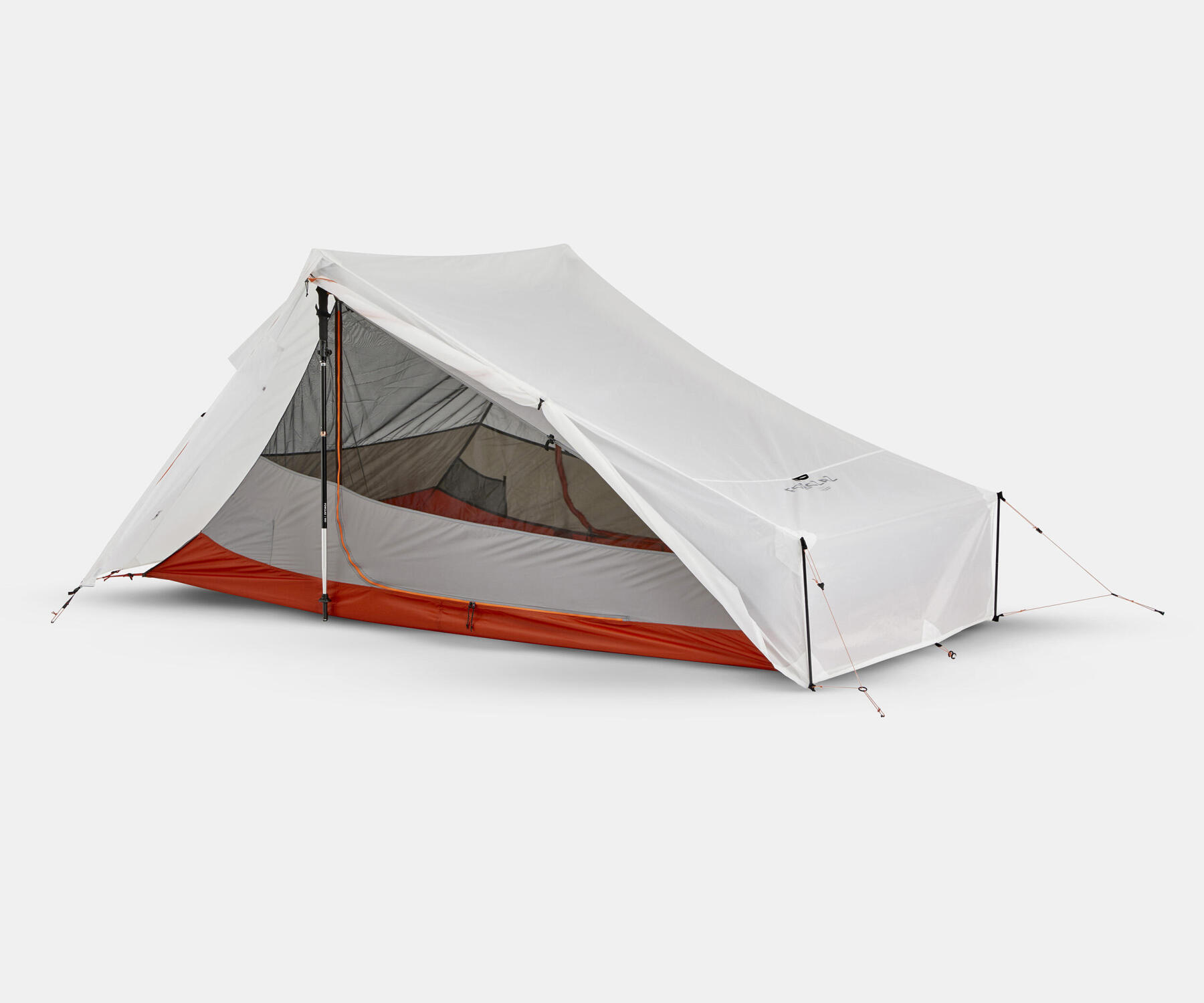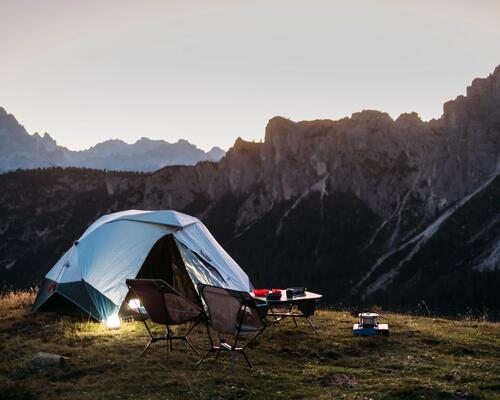Waterproofness & wind resistance
Check the weather forecast and campsite location before going camping. Weather can change quickly in the countryside and some exposed areas.
A durable, breathable, waterproof, and wind-resistant tent is essential for keeping you comfortable and safe when camping.
To make sure our tents are safe and comfortable for mountain lovers, Decathlon's R&D teams work together in each phase of product development and testing in Passy, at the foot of Mont-Blanc, in France.
All tents passed the lab test in France.
Test For Waterproofness
Simulate the actual conditions you may encounter in the mountains.
Ideally, your tent needs to resist tropical rain similar to 200L/h for 4 hours. Our tents have a double roof featuring a waterproof coating and waterproofed seams, thanks to heat-sealed bands.
They also feature a chamber in breathable polyester that helps to avoid contact with water condensation that can be formed on the inner side of the double roof.
Lastly, the coating of our tents' floor mats are also reinforced to avoid water penetration from the ground.
Test For Wind Resistance
All Decathlon tents are tested in wind tunnels on a rotating plate to expose each side of the tent to the wind.
If you are planning to camp outdoors, ensure that - correctly assembled and with all awnings open - the tent must be able to withstand winds between 40 - 60 kph (Force 5 to 6).


